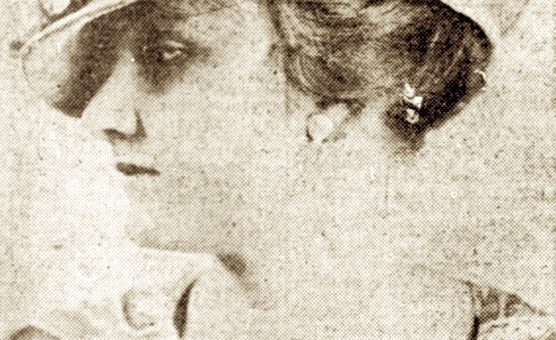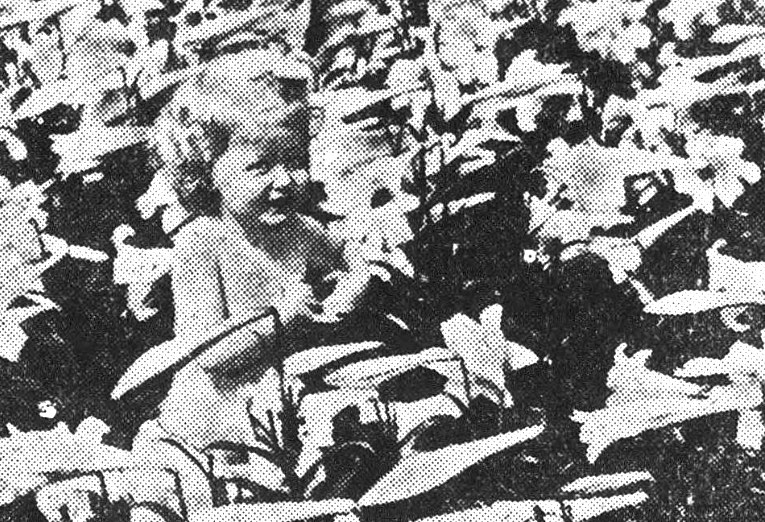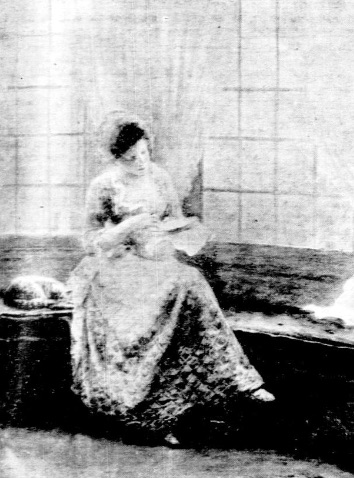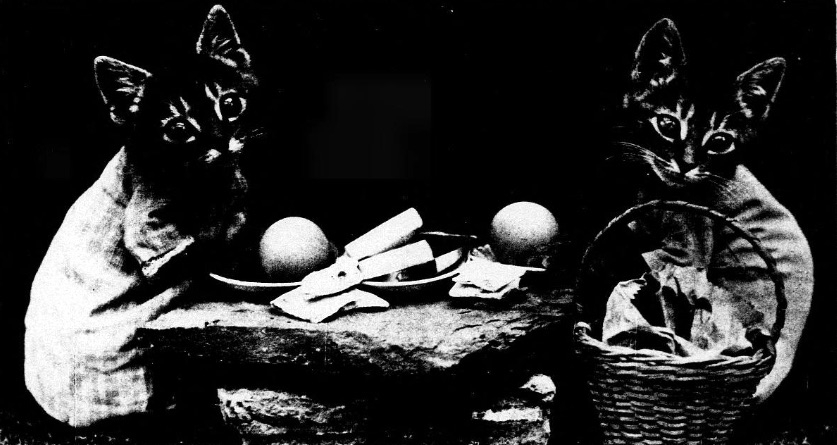
The symbols of Easter are ancient, and have been adopted by numerous religions. Our great ancestors celebrated the coming of Spring, and as new religions, including Christianity, came roaring across Europe, symbols of the old religions blended with the new.
The article below was originally published in 1933.

The Symbolism of Easter
With the possible exception of Christmas, there is no other red letter day in our calendar which has associated with it so many difference symbols as has Easter. Back of all these symbols, of course, is the one essential fact that Easter day is the anniversary of the resurrection of Jesus, and the spirit of Easter is the reassurance that there is life after death, that the soul of man is immortal.
But even though Easter is a Christian festival it has its parallels in paganism and the symbolism of Easter shows a curious mixture of the Christian and the pagan. To the Christian conscious of the true meaning and religious significance of Easter, it is a matter for regret that man persons are seemingly more familiar with the pagan symbols, which have become associated with Easter incidentally, than they are with the true symbols of that day. However, the association of some of these familiar Easter symbols, pagan though they may have been in origin with a Christian festival, has a certain inherent interest.

Eggs
The association of the egg with Easter goes back to certain beliefs of the ancients. Eggs had been associated with the worship of Ashtoreth, of the Astarte of the Phoenicians. Isis of the Egyptians, Diana of the Greeks and Romans and Eostre, whom the Teutons worshipped in the spring. Incidentally, the name Easter is said by some to be derived from the name of this Teutonic goddess, although others assert that it was named for an old pagan spring festival in honor of the sun’s new birth in the east.
The Egyptians regarded the egg as an emblem of the recreation of things and of man’s regeneration. Then, too, the egg with its life germ destined to produce a living creature when warmed by the mother hen is easily associated with the idea of the earth blossoming forth under the warm rays of the sun in the spring, both closely akin to the general idea of resurrection.
Since the Resurrection of Christ occurred in the spring, it is easy to see how the symbols of the egg and all revived life in the springtime came to be associated with this event in this history of Christianity. The egg as a symbol was taken over by the Hebrews as an emblem of their delivery from bondage and next the early Christians took it over as their symbol of the Resurrection.

Hare
The association of the rabbit or hare with Easter has its foundations in the ancient belief in European and Asiatic countries that the hare is the symbol for the moon. The moon is the “open eyed watcher of the night,” and the hare is a nocturnal animal. The young of the hare are born with their eyes open and are said never to close them. Since the date of Easter is governed by the moon, it is easily seen how the rabbit, which is the symbol for the moon, came to be an Easter symbol also.
The more intimate association of the rabbit and the egg is probably due to a pretty little legend which comes from Germany. It is as follows:
“It was a lovely day in early springtime and Mrs. Rabbit was hurrying along the woodland path, taking some wild flowers to a sick woodchuck friend. Suddenly she came upon a lot of loose feathers in the path. She looked about her and then discovered a nest full of eggs.
“‘Oh, dear me,’ exclaimed Mrs. Bunny, ‘a fox must have stolen the mother chicken. And there are her eggs getting chilled. I’ll just sit on them to keep them warm.’ So saying, she put down her baskets and sat upon the nest.
“Imagine Mrs. Rabbit’s surprise, when she got up from the nest, the next morning and found that a family of chicks had hatched from the eggs. ‘Since their mother is gone I presume I shall have to take care of the poor little things,’ said the tender hearted Mrs. Rabbit. This she did. Ever since then the rabbit has been associated with Easter and Easter eggs.”
In some parts of northern Germany the children hang eggs on trees similar to Christmas trees and candy favors, gifts and all sorts of Easter novelties are placed on the tree around which the children gather, and sing happy songs on Easter morning. Peasants in other European countries were accustomed to hang festoons of eggs over the chimney piece and to hand them down as heirlooms, for they were regarded as treasures to be kept and not as baubles to be destroyed or thrown away,
In England, under the old ecclesiastical laws, rent was payable in Easter eggs; games were played with them (a fact which was probably the forerunner of Easter egg rollings, such as that observed each year on the White House lawn in Washington), especially by the children in north England. Still another association of the egg with Easter lay in the fact that it was contrary to religious tenets to eat eggs during Lent, but when Easter marked the end of that period they were the first fleshly nourishment after the fast to sanctify the body.
The custom of dyeing Easter eggs goes back for many centuries. Peasants in the European countries dyed them red, as a symbol of Christ’s blood, but the lords and ladies covered theirs with gold leaf. Later more elaborate decorations were used. Sometimes they bore cupids and love knots, flaming hearts and the signs of the zodiac. Sometimes they were halved and the shells hinged together with ribbon and lined with gilt paper and religious pictures. Among the Venetians it was the custom to give a friend a gift egg bearing the giver’s portrait, and many other variations on egg decoration were common in France, Spain, and Belgium.
Half a century ago, Easter eggs were made of porcelain, ivory, mother of pearl, bronze, silver, or gold in the form of little cases to hold various trinkets. But the modern child, favoring something useful as well as ornamental, prefers an Easter egg which he can first admire and then eat.

Easter Lily
The lily, as a symbol of Easter, has a double significance. It is one of the earliest spring flowers. It typifies the rebirth of nature after the long winter sleep. In its dry, brown bulb, life lies dormant during the winter and then when spring comes, this life begins to stir. First it pushes out the tender green leaves, and then the buds appear. Finally the white blossom comes forth in all its glory as the perfect emblem of resurrected life.
Its other significance is a religious one, its snow white purity being emblematic of the flawless life of Christ whose resurrection from the time we commemorate on Easter day. In fact, no other flower has a place in the religious life and literature of the Christian world to compare to the lily. Yet its glory is not so new as Christianity, ancient though the beginnings of the religion may seem to us.
The Greeks and Romans prized it above all flowers and in their earlier civilizations it had already come to symbolize purity and virtue. It was because of the place lilies had won in the popular esteem that they found place in the early paintings of the Virgin. The angel Gabriel was depicted carrying them in annunciation pictures and it is because of this that the most beautiful of these flowers, Lilium condidam, most used at Easter, is called the madonna lily.

New Clothes
The custom of wearing new clothes at Easter time was both pagan and Christian in origin. Nature bedecked herself in fresh and attractive raiment and it was thought only fitting that the people, too, should signalize the great change. The Christian conception of “newness of life” here and hereafter was symbolized appropriately by the white robes worn on the occasion of their baptism by converts to the faith. These robes also had reference to the garb of the angels seen at Christ’s tomb.
During later years the custom of donning new clothes on Easter Sunday became such a fixed and universal one that nonobservance was considered not only to be a sign of eccentricity, but also a forerunner of bad luck.

Fire
One does not commonly think of fire as an Easter symbol, yet fires and the burning of effigies were features of Easter celebrations in some parts of the world. Bonfires were lighted in Great Britain in the early spring to honor the sun, while in Athens Judas was burned in effigy on Easter Sunday. Such effigies also were burned elsewhere and the practice continued for many years, although it is a custom that has not been followed for a long time and never was universal.

Easter Cards
The custom of sending Easter cards is one that has grown tremendously, particularly in very recent years. Cards are of every style and kind, and range from plain, inexpensive ones to those which represent considerable hand labor and are costly in proportion.

Hot Cross Buns
Perhaps nothing associated with Easter is a better example of Christian adaptation of a pagan symbol than the eating of hot cross buns on the Good Friday, preceding Easter.
In Egypt, where the moon goddess was believed to have horns representing the crescent moon, sacred cakes were offered to her, each cake cut with horns. The Greeks adopted the Egyptian custom, and they also offered horned cakes to the moon goddess on the altar where the ox, her sacred animal, was sacrificed.
In fact, the custom of eating cross marked cakes in honor of the sun or moon god, especially at the time of the spring equinox, was found by the early Christian missionaries in many parts of the world, especially Britain, Mexico and Peru. It has been suggested that the cross mark on the cakes was intended to represent the four phases of the moon, but in the Christian symbolism, this mark, of course, represents the cross upon which Christ died.
Source: The midland journal. (Rising Sun, Md.), 31 March 1933.

